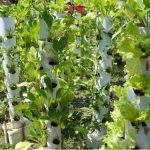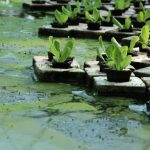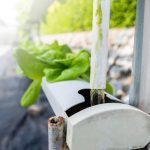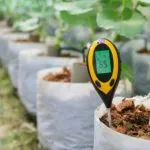In the world of indoor gardening, nothing can be more frustrating than asking yourself, “Why are my hydroponic plants wilting?” You’ve provided them with all the essentials: light, water, and nutrients, yet they’re showing signs of distress. Don’t worry! This article is here to help you troubleshoot and get your plants back to their healthy state.
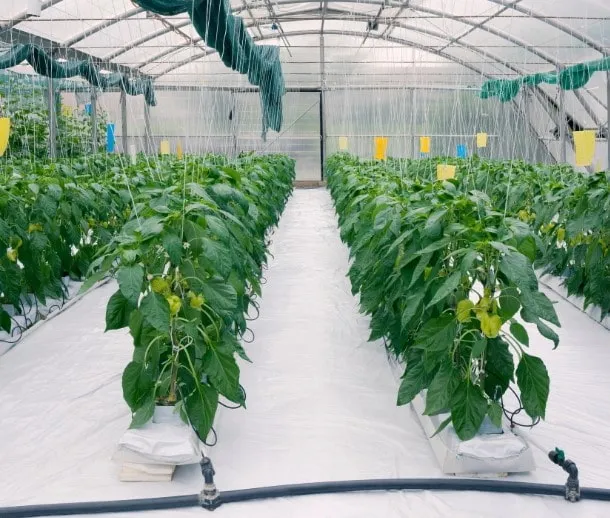
Wilting hydroponic plants can be a sign of various issues, from inadequate nutrients to improper pH levels. But identifying the root cause is not always straightforward. In this comprehensive guide, we’ll explore the possible reasons behind the question, “Why are my hydroponic plants wilting?” and provide practical solutions to rectify these issues. Whether you’re a seasoned hydroponic farmer or a beginner, this article is a valuable resource to help ensure your plants flourish.
Understanding Plant Wilting
Plant wilting might initially strike fear into the heart of any gardener, but it’s a common condition that can affect plants growing in soil or hydroponic systems. At its core, wilting refers to a plant’s inability to maintain the stiffness in its tissues, causing its leaves and stems to droop. This phenomenon is not always indicative of a serious problem, and understanding why plants wilt and how it affects their health can help you take appropriate action to keep your garden thriving.
Plant wilting can be attributed to a variety of factors. The most common cause is water stress. Plants need water to transport nutrients from the roots to the rest of the plant. Both under- and over-watering can lead to wilting.
Temperature stress is another cause of wilting. Extreme temperatures, whether too hot or too cold, can cause damage to the plant tissues, leading to wilting. Other potential causes can include a lack of nutrients, pest infestations, diseases, and physical damage, all of which can interfere with the plant’s ability to absorb or transport water and nutrients.
Temporary vs. Permanent Wilting
Wilting can be temporary or permanent, and distinguishing between these two conditions is crucial for effective plant care.
Temporary wilting often occurs in response to environmental stressors such as heat or dry conditions. For example, you might notice your plants wilting on a hot afternoon, only to recover once the temperatures drop in the evening. This is because plants may lose water faster than they can absorb it during high heat, but they can recover once conditions improve.
On the other hand, permanent wilting is a sign of more serious issues. This can occur if a plant is chronically under-watered, over-watered, or exposed to extreme temperatures for a prolonged period. Diseases, pests, and nutrient deficiencies can also lead to permanent wilting. Unlike temporary wilting, plants cannot recover from permanent wilting without intervention.
Effects of Wilting on Plant Health and Growth
Wilting can have a significant impact on plant health and growth. For one, it can hinder the plant’s ability to photosynthesize, as water is a crucial component of this process. This can lead to stunted growth, yellowing leaves, and in severe cases, plant death.
Furthermore, wilting can weaken a plant’s natural defenses, making it more susceptible to pests and diseases. It’s also worth noting that wilting can be a sign of an underlying issue that could have additional effects on plant health, such as nutrient deficiencies or root rot.
By understanding the causes and implications of plant wilting, you can better identify and address any issues in your garden or hydroponic system. Remember, the key to keeping your plants healthy is attentive care and prompt action when problems arise.
Why Are My Hydroponic Plants Wilting? Common Causes
Inadequate watering or irrigation system malfunction
Watering is a crucial component of hydroponic gardening and a primary key to your plants’ health. The balance is often a delicate one, as both overwatering and underwatering can lead to wilting of hydroponic plants and other adverse conditions.
Overwatering vs. Underwatering
Overwatering in hydroponics is a bit of a misnomer. It doesn’t mean you’re simply giving your plants too much water. Instead, it refers to a situation where your plants’ roots are continuously submerged in water, leaving them oxygen-starved. This can lead to root rot, a condition that can cause your plants to wilt and eventually die. Here’s some help for preventing and treating root rot.
Underwatering, on the other hand, deprives your plants of the necessary moisture they need to transport nutrients. The roots can dry up, leading to a weakened plant that wilts and eventually dies.
Identifying signs of overwatering or underwatering
So, how do you tell if you’re overwatering or underwatering your plants?
- Signs of overwatering: The most common sign is yellowing leaves, especially if the yellowing starts at the lower leaves and works its way up. The leaves may also appear swollen and blistered. You might notice a musty smell or even see mold, which are signs of root rot.
- Signs of underwatering: The leaves will typically wilt, curl, and turn brown, starting from the edges and moving inward. You might also see slow or stunted growth. If the roots appear dry and brittle, that’s another sign you’re not providing enough water.
In both cases, it’s crucial to adjust your watering practices as soon as possible. For overwatering, you might need to improve your system’s drainage or reduce the frequency of watering. For underwatering, increase the water supply, ensuring it’s evenly distributed to reach all the roots. Regular monitoring and adjustments can help keep your hydroponic plants healthy and thriving.
Temperature and Humidity Extremes
Temperature and humidity extremes can have detrimental effects on your hydroponic plants. High temperatures can cause plants to wilt, as they transpire more to cool down, leading to rapid water loss. On the other hand, low temperatures can slow plant growth and impact nutrient uptake, leading to stunted growth and possible wilting.
High humidity can create an environment conducive to mold and fungus growth, which can damage plant health. Low humidity levels can cause plants to transpire excessively, leading to dehydration and wilting.
Optimal Temperature and Humidity Ranges for Hydroponic Plants
Generally, most hydroponic plants thrive in temperatures between 65°F and 80°F. However, the specific range can vary based on the type of plant you’re growing. For instance, leafy greens like lettuce prefer cooler temperatures, around 60°F to 70°F, while tomatoes and peppers prefer a warmer climate, between 70°F and 85°F.
When it comes to humidity, the ideal range for most plants is between 40% and 60%. Higher humidity levels can benefit tropical plants, but it’s vital to balance humidity with proper ventilation to prevent disease and pest issues.
Regulating temperature and humidity in your hydroponic system is crucial to prevent wilting and promote healthy growth. Here are a few strategies:
How do you cool down a grow tent?
How to raise the temperature in a grow tent
Poor Air Circulation and Ventilation
Airflow plays a crucial role in the health and development of your hydroponic plants. It’s not just about delivering vital carbon dioxide for photosynthesis, but also about maintaining an environment that discourages the growth of pests and diseases.
Air circulation is essential in hydroponic systems for three primary reasons:
- Temperature Regulation: Proper ventilation helps distribute heat evenly throughout the system, preventing hot or cold spots that can stress your plants and lead to wilting.
- Disease Prevention: Good air movement reduces the humidity around your plants, making it harder for diseases to establish and spread.
- Carbon Dioxide Supply: Plants need carbon dioxide for photosynthesis. Without sufficient airflow, they can quickly use up all available CO2, limiting their growth and potentially leading to wilting.
Signs of Insufficient Ventilation
Here are some signs that your hydroponic setup may not be getting enough air circulation:
- Drooping or Wilting Leaves: This is often one of the first signs of poor ventilation. A lack of fresh air can cause hydroponic leaves drooping.
- Stunted Growth: If your plants are growing slower than expected, or not at all, it might be due to insufficient airflow.
- Mold or Fungus: These thrive in stagnant, humid environments. If you’re seeing these signs, it’s likely your ventilation needs improvement.
Tips to Improve Air Circulation in Your Hydroponic Setup
Improving air circulation in your hydroponic system doesn’t have to be a huge undertaking. Here are a few simple tips:
- Use Fans: Install oscillating fans to keep the air moving around your plants. This will help distribute heat, lower humidity, and replenish CO2.
- Increase Ventilation: If your setup is enclosed, make sure there are enough vents or openings to allow fresh air to enter and stale air to leave.
- Regularly Check & Clean Equipment: Dust and dirt can clog up vents and fans over time, reducing their efficiency. Regular cleaning ensures they work at their best.
- Space Your Plants Properly: Overcrowding can limit airflow between plants. Giving plants enough space can help ensure they all get the fresh air they need.

Lighting Issues
Hydroponic plants, just like their soil-grown counterparts, require the right balance of light to thrive. When you’re seeing wilting in your plants, one of the first things to check is the lighting situation. This could be a result of either too much light or not enough, and it’s essential to correct this problem to get your plants back on track.
Too Much Light
When your hydroponic plants receive excessive amounts of light, they can end up wilting or showing signs of light burn. This is because the intense brightness can overheat the plant and cause it to lose moisture at a faster rate than it can absorb it. This rapid moisture loss can lead to wilting and, in severe cases, can damage the plant cells, leading to brown or yellow spots on the leaves.
To fix this issue, consider adjusting the position or intensity of your grow lights. You may also want to invest in a light meter to help you keep tabs on the light intensity your plants are receiving. It’s also good practice to set up a timer to create a consistent light/dark cycle that mimics natural daylight hours.
Insufficient Light
On the other hand, insufficient light can also lead to wilting. Plants need light for photosynthesis, the process in which they convert light, water, and carbon dioxide into the nutrients they need for growth. If they’re not getting enough light, this process can’t occur effectively, leading to undernourished and wilted plants.
If you suspect your plants are not getting enough light, you might need to increase the duration they spend under the lights or move your setup to a brighter location. You could also consider upgrading to a more powerful light system. Remember, different plants have different light needs, so it’s important to research the specific requirements of your plants.
Wrong Light Spectrum
It’s not just the intensity and duration of light that matters, but also the spectrum. Plants need different light spectrums during the vegetative and flowering stages of growth. If they’re exposed to the wrong spectrum at the wrong time, it could lead to wilting or other growth issues.
For instance, during the vegetative stage, plants tend to favor the blue spectrum, while the flowering stage requires more of the red spectrum. Using full-spectrum lights can help ensure your plants get the full range of light they need throughout their life cycle.
To sum up, lighting plays a crucial role in the health of your hydroponic plants. By monitoring and adjusting the amount, duration, and spectrum of light your plants receive, you can prevent wilting and ensure your plants thrive in their hydroponic environment.
Pest and Disease Issues
Hydroponic gardening, like any other form of cultivation, carries the risk of pest and disease infestations. Even though this method is often touted as a cleaner, more controlled environment, it’s not entirely immune to these problems. Let’s dive into the common pests and diseases that could be causing your hydroponic plants to wilt, how to recognize them, and effective methods to prevent and control their spread.
Common Pests and Diseases in Hydroponics
In the hydroponic world, some pests seem to be more prevalent than others. These include:
- Spider Mites: These tiny arachnids are a common menace in hydroponic systems, where they feed on plant juices, causing leaves to yellow and plants to wilt.
- Aphids: These sap-sucking insects can cause wilting, yellowing, and stunted growth. They also produce honeydew, which can lead to the growth of sooty mold.
- Root Rot: This is a disease, not a pest, and it’s caused by waterborne fungi like Pythium and Fusarium. They attack the roots of the plants, causing them to rot and the plant to wilt.
Recognizing Signs of Pests or Diseases
Early detection is crucial to prevent widespread damage to your hydroponic garden. Here are some signs to look out for:
- Leaf Damage: This is often the first sign of a pest problem. Look for discoloration, spots, or holes in the leaves. There are other hydroponic leaf diseases that you should know about.
- Stunted Growth: If your plants are not growing as they should, pests or diseases could be the cause.
- Unhealthy Roots: In hydroponics, the roots should be white and healthy. Brown, slimy roots are a sign of root rot.
Effective Methods for Pest and Disease Prevention and Control
Maintaining a healthy hydroponic system is the best way to prevent pests and diseases. Here are some effective methods:
- Regular Inspection: Regularly inspect your plants and system for early signs of pests or diseases. The quicker you find a problem, the easier it will be to handle.
- Proper Sanitation: Keep your grow area clean. Remove dead plant material promptly and sanitize your system between plantings.
- Beneficial Insects: Introducing beneficial insects like ladybugs can control pests like aphids and spider mites.
- Use of Fungicides and Pesticides: In cases where an infestation has already occurred, you may need to use fungicides for diseases like root rot and pesticides for pests. Always follow product instructions carefully.
Hydroponics Plants Wilting After Water Change
Several factors could cause your hydroponic plants to wilt after a water change. If the water temperature, pH, or nutrient concentration changed dramatically, it could cause the plants to wilt. Try to keep these factors as steady as possible and prevent shock.
Water temperature can affect the health of hydroponic plants, including triggering wilting. Here’s why:
- Root Oxygenation: When the water temperature is too high, it reduces the amount of oxygen that can be dissolved in the water. Plants need oxygen for respiration, so if the roots can’t get enough, they can become unhealthy and cause the plant to wilt.
- Development of Pathogens: Warm water is a conducive environment for the growth of harmful fungi and bacteria. These pathogens can attack the plant roots, causing root rot and wilting.
- Nutrient Uptake: The temperature of the water can also affect the plant’s ability to take up nutrients. Too cold water can slow down metabolic processes, while too hot water can lead to nutrient burn. Both situations can lead to wilting.
To avoid these issues, most hydroponic growers try to keep the water temperature between 65 and 75°F (18-24°C). However, the ideal temperature can vary depending on the specific plants being grown. Regular monitoring and adjusting of water temperature can help maintain plant health.
If the pH level is off, plants can show various signs of stress, one of which is wilting. This is because the plant can’t take in water and nutrients effectively, leading to dehydration and nutrient deficiency. If the pH is too high or too low, it can lock out essential nutrients, leading to deficiencies that can cause wilting. An optimal pH level for most hydroponic plants is typically between 5.5 and 6.5. If it’s outside this range, plants may struggle to take in nutrients even if they’re present in the water.
If the new water doesn’t contain the right balance of nutrients, the plants could suffer. Make sure you’re using a nutrient solution designed for hydroponic plants, and that you’re following the mixing instructions correctly.
If the new water contains contaminants, it could harm the plants. Consider testing the water quality to ensure it’s safe for your plants.
If your plants’ roots are unhealthy, they may wilt after a water change. Check the roots for signs of disease, such as discoloration, sliminess, or a bad smell.
To prevent wilting, try to change the water gradually to prevent shock, ensure you’re using the right nutrients, and keep an eye on your plants’ health.
Reviving Wilting Hydroponic Plants
Here, we’ll show you how to fix a wilted plant with immediate actions you should take, adjustments in watering and nutrients, providing extra care, and how long recovery might take. Lastly, we’ll explore preventive measures to ensure your plants remain vibrant and healthy.
Immediate Actions to Take When Plants are Wilting
Acting quickly can be crucial in saving wilting hydroponic plants. First, check the water temperature, as it should be between 65-80°F for most plants. If it’s too high or low, adjust accordingly. Next, examine the roots for any signs of disease or pests. If you spot any, isolate the affected plants to prevent spread. Lastly, test the pH levels of your water. Ideal levels usually range between 5.5 and 6.5. Use a pH adjuster to correct any imbalances.
Adjusting Watering and Nutrient Levels
Improper watering and nutrient imbalances are common causes of wilting. Hydroponic systems should provide a balance of oxygen and water to the roots. Ensure your system allows for a wet-dry cycle, where roots can take up oxygen.
For nutrients, remember the adage: “Less is more”. Overdosing nutrients can cause toxicity, leading to wilting. Begin with a half-strength nutrient solution and gradually increase it observing the plant’s response. Regularly check the nutrient solution’s EC (electrical conductivity) levels to ensure they are within the recommended range for your specific plants.
Providing Additional Support and Care to Stressed Plants
Stressed plants need extra TLC. Consider adding beneficial bacteria to your system, which can help strengthen plant roots and boost overall plant health. Also, maintain a consistent environment by avoiding sudden changes in temperature, humidity, or light exposure.
How Long It Takes for Plants to Recover from Wilting
The recovery time for wilting plants can vary, depending on the severity of the stress and the plant’s overall health. Minor issues can often resolve in a few days with proper care. However, severe cases might need a few weeks. Be patient and consistent with your care.



